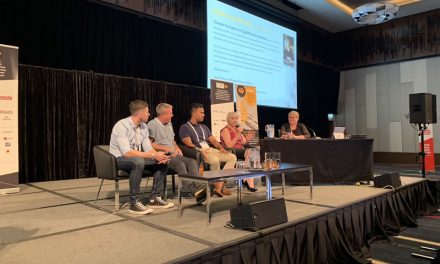How to boost performance with wellbeing
At the time of writing this article, I am sitting in lockdown in Melbourne and, like others, hopefully and, at times, frustratingly awaiting news that restrictions will ease and I will be able to gradually resume my normal life.
In other parts of Australia, people are at various stages of emerging from that cocoon but there is no question that we are all going to feel the effects of this pandemic for a long time to come, particularly regarding mental health.
The issue of mental illness and the related question of what we can do in Australian workplaces that will make a positive difference for our people and our businesses has been in the spotlight now for a number of years.
Just a year ago, the Productivity Commission released its draft report on the state of mental health in Australia which featured some fairly sobering numbers:
- 1 in 2 Australians will suffer mental illness in their lifetime.
- 1 in 5 Australians will suffer mental illness in any year.
- Mental illness costs $500 million in productivity nationally each day.
Of course, with the devastation caused by bushfires and the pandemic since then, we expect those numbers to rise significantly.
So what can you do to play your part by making a positive difference for your people, your business and yourself?
The Workplace Wellbeing Survey
Since 2018, a national workplace wellbeing survey has been regularly conducted through a partnership between the Wellbeing Lab (an internationally recognised team of experts on neuroscience, positive psychology and human wellbeing) and the Australian Human Resources Institute.
They have undertaken that survey of over 1000 workers nationally three times in the last year most recently in August 2020 (with the David L. Cooperrider Centre in the US). So it gives us quite a good feel for how people’s perceptions of their wellbeing at work have changed over this period.
The survey looks at wellbeing in two contexts – the degree to which people feel that they have struggles and the degree to which they feel they are flourishing. People then fall into one of the following categories:
- Consistently thriving
- Living well, despite struggle
- Not feeling bad, but just getting by
- Really struggling
So what are the key findings?
- 2% of Australian workers are “living well, despite struggle” and that number has hardly changed at all in the last year
- The number of workers who are “consistently thriving” has dropped from 14.7% to 7.4% and there is an increase of 5% in the those who are “not feeling bad, but just getting by”
- That all tells us that people who have struggles can still flourish and struggle helps resilience in challenging times
What do they recommend as actions to support workplace wellbeing?
The report recommends a systems approach that operates with 3 layers:
ME level: providing a variety of workplace wellbeing support noting that, according to workers surveyed, the least used and most effective support is wellbeing coaching.
WE level: managers who show care and compassion for their team and the people in them deliver higher levels of performance, job satisfaction and commitment.
US level: workplaces that support people’s basic psychological needs of autonomy, competence and relatedness, make it easier for people to thrive consistently.
What is the business case for investing in wellbeing?
According to the Wellbeing Lab, wellbeing, in its simplest form, is “our ability to feel good and function effectively as we navigate the natural lows and highs we all experience”.
They say that workplaces that choose to invest in employee wellbeing, and have happy and engaged workers experience, on average:
70% fewer safety incidents
42% lower turnover, on average
10% higher customer ratings
10% higher over average shareholder return
Well known Australian social researcher, Mark McCrindle and his associate Ashley Fell published a new book just a few months ago on the same subject.
Titled Workplace Wellbeing: Leading thriving teams in rapidly changing times, the book reports on another 2019 survey of over 1000 Australian workers which found that:
- 62% of respondents said that mental health and stress of workers would have the biggest impact on the future of work and;
- 72% said that workplace wellbeing is the most important element for their workplace.
It reported similar benefits of investment in wellbeing to those of the Wellbeing Lab.
The penny drop
If you look at what we are told are the keys to having thriving businesses and high performing teams, guess what?
They look pretty much the same as what we are told are the keys to developing positive workplace wellbeing.
The best model that I have discovered for this is the Engage for Success framework developed in the UK 10 years ago from a government commissioned study on how to create better employee engagement for better organisational and national economic performance.
The model has 4 key pillars of employee engagement:
- A strong strategic narrative – a clear purpose and vision of where we have come from and where we are going that people can engage with
- Engaging management – people have clarity about their roles and performance expectations and they are supported and coached to be the best that they can be
- Genuine employee voice – people feel psychologically safe to speak up if they have an idea or a concern and they are genuinely consulted about changes that affect them
- Integrity – we walk the talk on our values and there is no gap between the rhetoric and the reality
The model and related research and tools are freely accessible at www.engageforsuccess.org. We use the framework as a centrepiece in our consulting work because it is so simple to understand, fits any business size or industry and it works. The complementary coaching program that we have developed also includes a component on wellbeing.
Finally, I read with interest “Get the culture right” in the January 2020 edition of TTN. This told the story of the remarkable turnaround in business culture at Kennedy’s Timbers achieved through a focus on employee engagement and wellbeing. See www.timbertradernews.com/2020/01/22/get-the-culture-right/. It is great to have a local industry case study that illustrates the benefit of the investment for the business, its people and the owner’s wellbeing in a setting that you are familiar with. That just shows that it can work for you too.
Peter Maguire is the owner and practice leader of Ridgeline HR, an award winning HRM consulting practice which he founded in 2000. Peter is an acknowledged expert in workplace relations compliance and also a high-performance leadership coach with over 40 years experience in HRM. Ridgeline HR’s byline is Helping PEOPLE in BUSINESS and that is essentially what Peter does – help business people with their people business.












